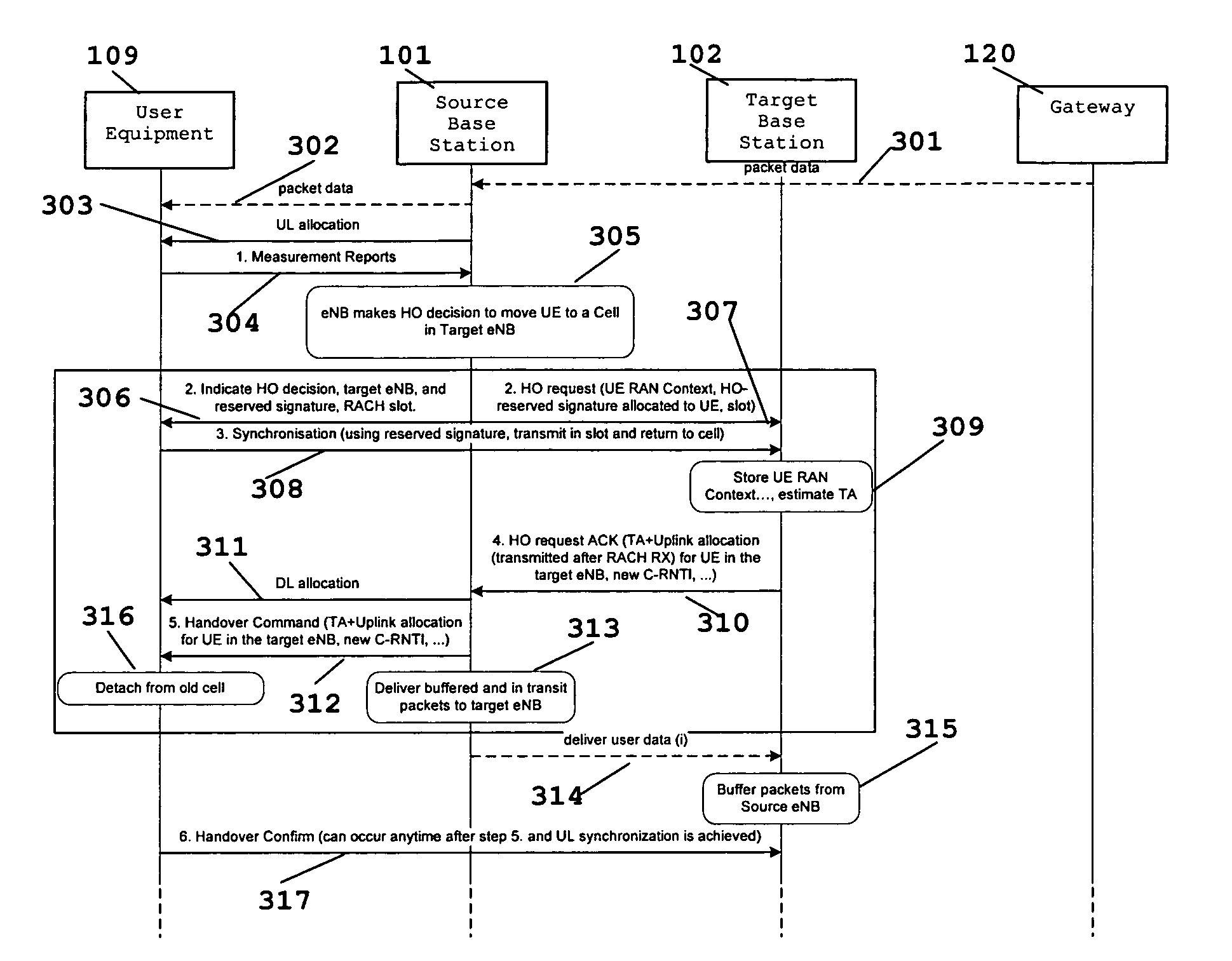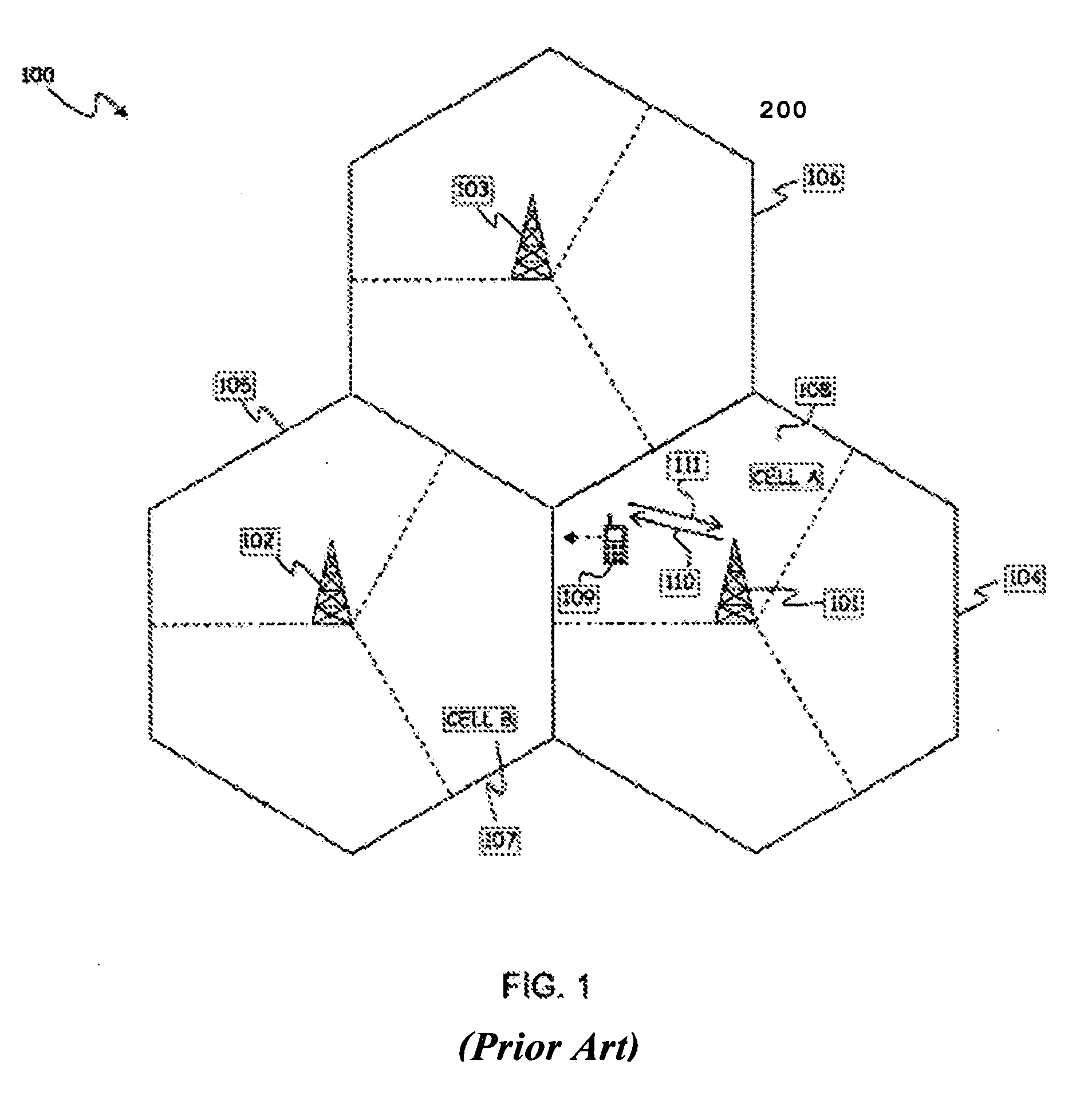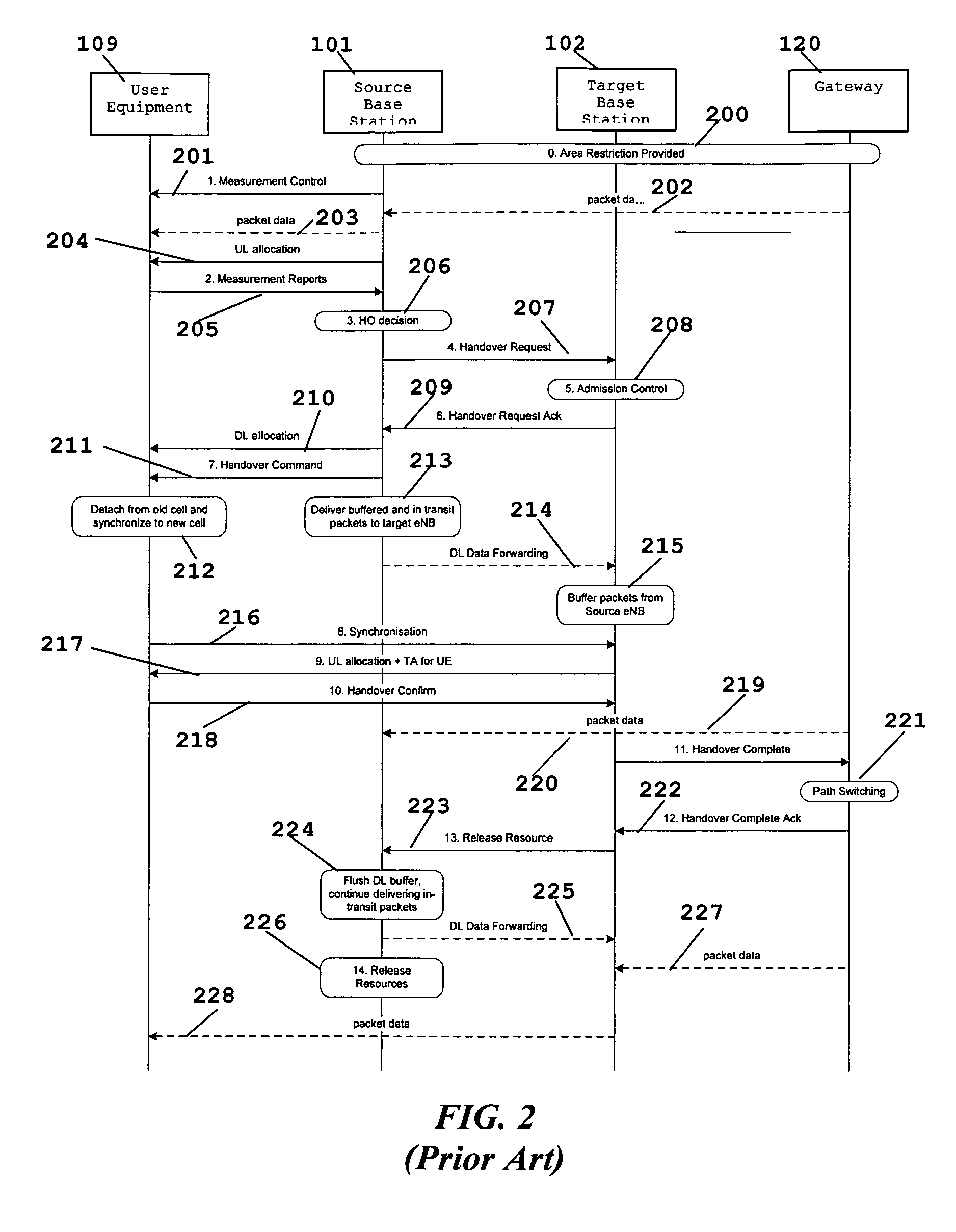Pre-Synchronization Method for Hard Handovers in Wireless Networks
a wireless network and pre-synchronization technology, applied in the field of wireless cellular communications, can solve the problems of affecting the cost of both user equipment and base stations, user equipment typically performing a hard handover, and requiring some complexity, so as to reduce the interruption time of handover, reduce the latency of rach/ul synchronization, and simple and efficient method
- Summary
- Abstract
- Description
- Claims
- Application Information
AI Technical Summary
Benefits of technology
Problems solved by technology
Method used
Image
Examples
first embodiment
[0026]FIG. 3 illustrates the communications process according to this invention. Initially packet data from gateway 120 is transmitted to base station 101 (step 301) the current base station for transmission to user equipment 109 (step 302). In step 302, base station 101 transmits a measurement control signal to user equipment 109. Base station 101 transmits a UL allocation signal to user equipment 109 (step 303). User equipment 109 responds with measurement reports (step 304) to base station 101. Base station 101 makes the handover decision (step 305). Base station 101 then sends a handover indication to user equipment 109 (step 306) with the reserved signature to use and the RACH slot to use with base station 102. Base station 101 also initiates a handover request to base station 102 in parallel (step 307). This also includes the communications parameters. Base station 101 knows the RACH slot when user equipment 109 accesses base station 102 and does not schedule it near that slot...
second embodiment
[0032]FIG. 4 illustrates this method which uses pre-synchronization based upon contention based RACH access. The pre-synchronization method with contention based access is identical to the contention-free access method illustrated in FIG. 3. As previously illustrated in FIG. 3, the UL synchronization process happens in parallel with the context transfer process. However, there are certain differences because of RACH procedure differences, and there is no longer a need that any signatures be pre-available at the source base station. This method is invoked when no handover reserved signature from target cell is available.
[0033]Initially packet data from gateway 120 is transmitted to base station 101 (step 401) the current base station for transmission to user equipment 109 (step 402). In step 402, base station 101 transmits a measurement control signal to user equipment 109. Base station 101 transmits a UL allocation signal to user equipment 109 (step 403). User equipment 109 responds...
PUM
 Login to View More
Login to View More Abstract
Description
Claims
Application Information
 Login to View More
Login to View More - R&D
- Intellectual Property
- Life Sciences
- Materials
- Tech Scout
- Unparalleled Data Quality
- Higher Quality Content
- 60% Fewer Hallucinations
Browse by: Latest US Patents, China's latest patents, Technical Efficacy Thesaurus, Application Domain, Technology Topic, Popular Technical Reports.
© 2025 PatSnap. All rights reserved.Legal|Privacy policy|Modern Slavery Act Transparency Statement|Sitemap|About US| Contact US: help@patsnap.com



